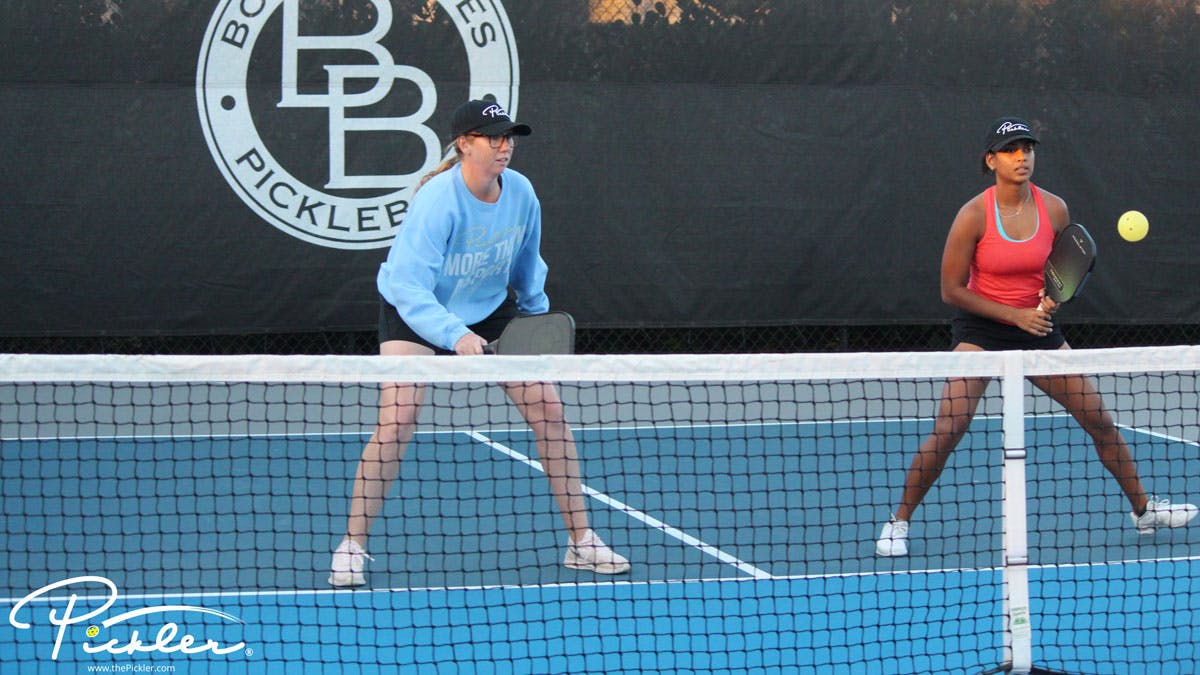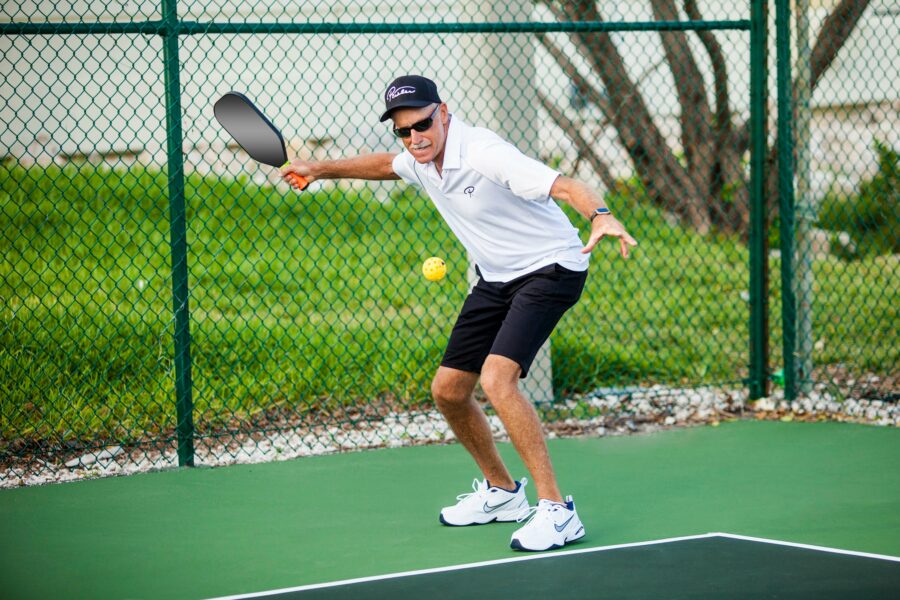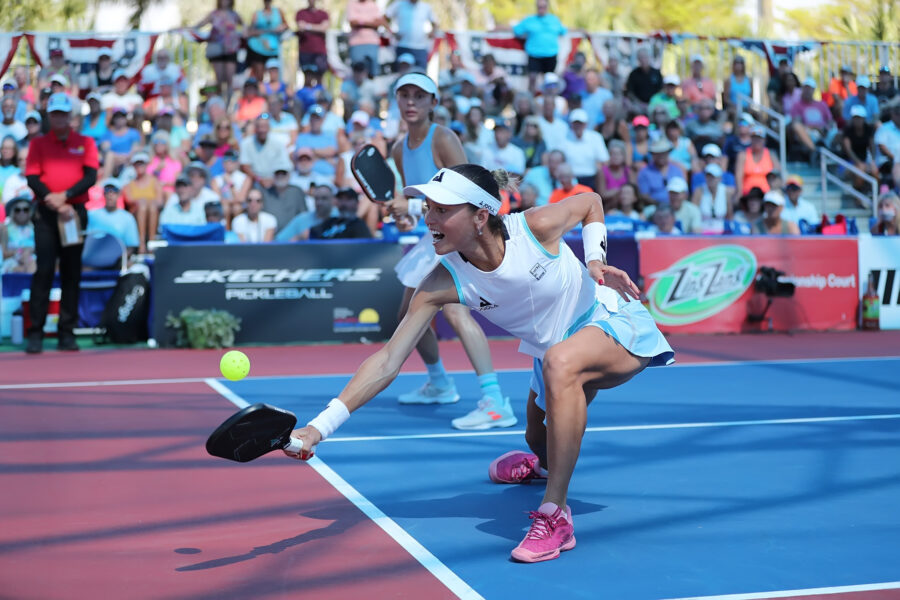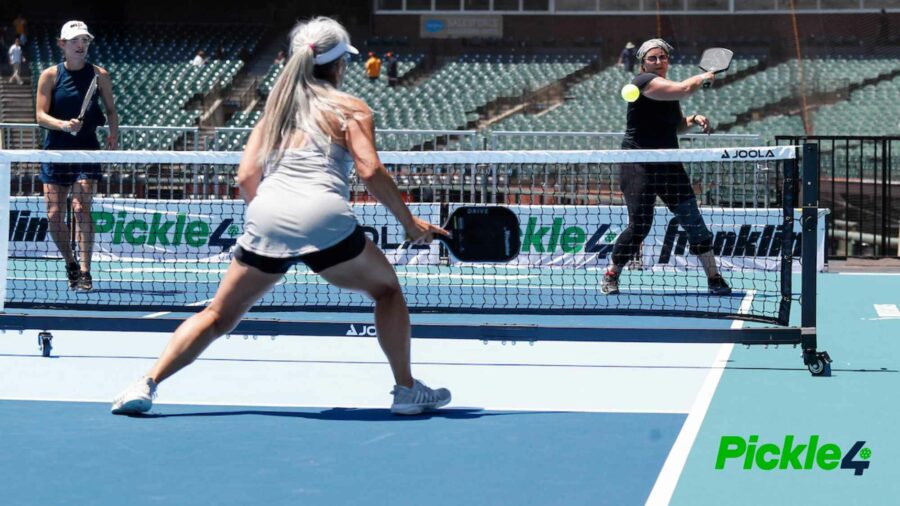There are a lot of shots you can take advantage of on the pickleball court. For instance, drives, drops, dinks, lobs, speed-ups, shots with spin (slice, top spin, side spin, etc.), and so on. The more shots that you have mastered, the better. But, sometimes that is not enough. What may matter even more is the ability to disguise your arsenal of shots, so that your opponents are constantly guessing on the pickleball court and unable to know what you will do next. Disguising your shots in pickleball is essential to keep your opponents guessing and gain a competitive edge.
On the pickleball court, your opponents are constantly looking for visual cues in order to anticipate your shot—whether it is the type of shot, speed, location, or otherwise. These visual cues help your opponents more quickly and more strongly counterattack your shots. So, when trying to disguise your shot, your goal is to minimize these visual cues that you give to your opponents. To do this, you generally want all of your shots to look the same. With uniformity, your opponents will not be able to discern what shot is coming next. To help you achieve this uniformity in your shot setup on the pickleball court, consider the following:
- Standard Body Position: Keep your legs, shoulders, and hips in the same position regardless of the type of shot you intend to make. In other words, stay compressed, with your knees bent, and move your feet so you are always making contact out in front of your body. If you stay in this standard position—which will allow you to hit most (if not all) shots of your choosing—then you will be able to stay consistent regardless of the shot you decide to hit on the pickleball court. This consistency will make it challenging for your opponents to anticipate your moves based on your body positioning. So, work from your compressed, athletic pickleball position on each and every shot!
- Standard Backswing: One of the biggest “tells” on the pickleball court is a player’s backswing. A big backswing typically indicates a drive or speed-up shot, while a small backswing typically indicates a softer shot, like a dink. Regardless of your preferred backswing (which, to note, your backswing should typically be a short backswing in order to be more efficient in your reaction time), be consistent across your shots and avoid giving up this popular tell to your opponents on the pickleball court. For instance, when at the Kitchen line in a dink rally, you could use small backswings for each of your dinks and then, while still using a short backswing, surprise your opponents with a lob or a speed-up shot that is generated with a flick of the wrist. Or, when at the Kitchen line, you could exaggerate your backswing on each dink (typically, when you have more time to react to your opponents’ dinks, such as when they are more defensive (than aggressive) dinks) and then use this big backswing to generate a speed-up when your opponents may not be expecting it. Regardless of whether you use a small or big backswing, using the same motion for different shots can create confusion for your opponents.
- Maintain Eye Contact: Keep your eyes focused on the pickleball and avoid looking at your target too early. Shifting your gaze prematurely can give away your intended shot direction. Wait until the last moment to look where you want to place the pickleball.
Disguising your shots in pickleball is a valuable skill that can help you gain an advantage over your opponents. Consistency in your form are key elements to help elevate the effectiveness of your shots on the pickleball court. Practice these techniques to keep your opponents guessing and improve your overall performance on the court. And, don’t forget to vary your shot selection and patterns on the pickleball court!
For more on disguising your shots on the pickleball court, learn about misdirection shots with Pickler’s article, “5 Tips to Master Misdirection Shots.”




